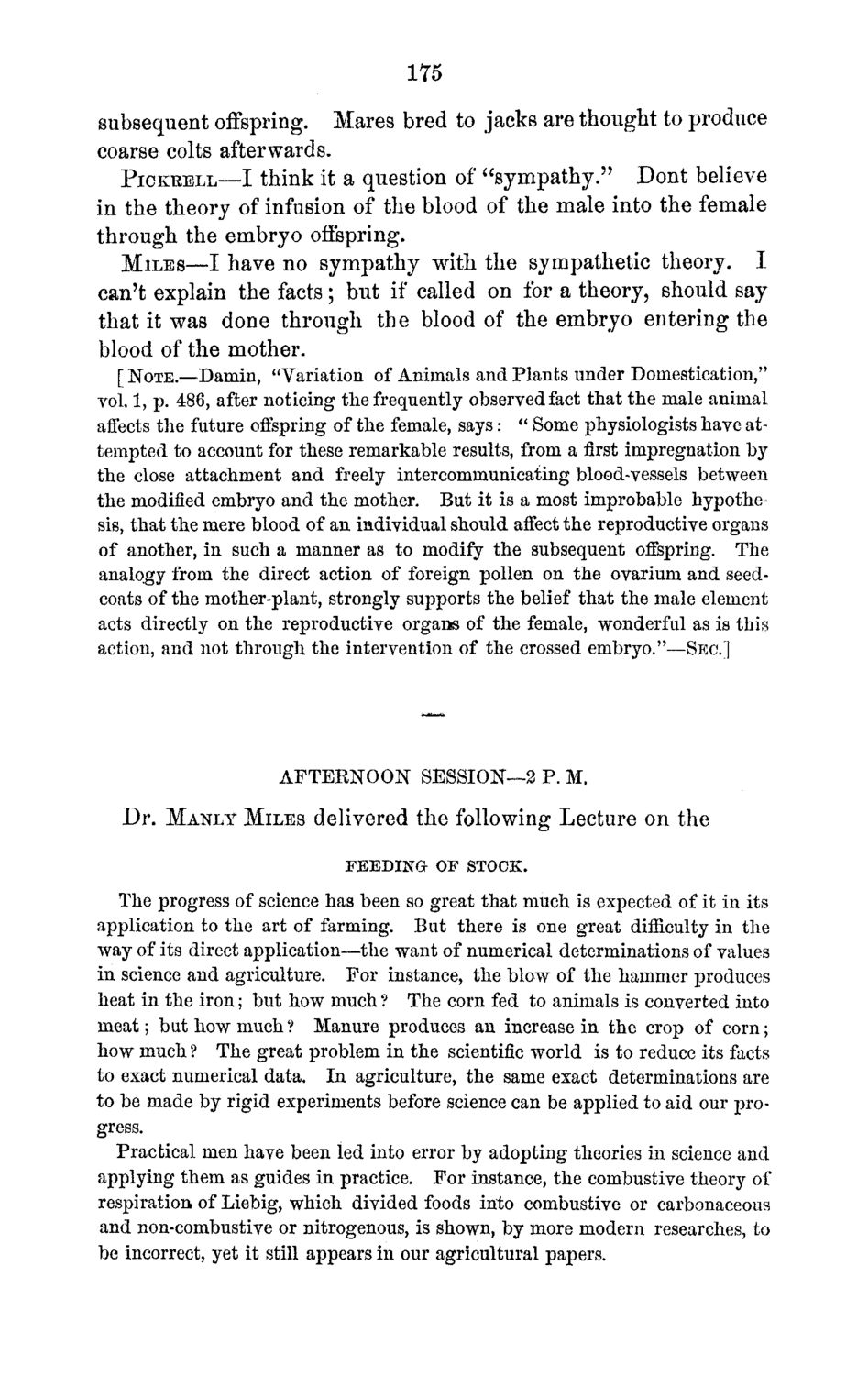| |
| |
Caption: Board of Trustees Minutes - 1870
This is a reduced-resolution page image for fast online browsing.

EXTRACTED TEXT FROM PAGE:
175 subsequent offspring. Mares bred to jacks are thought to produce coarse colts afterwards. PICKRELL—I think it a question of "sympathy." Dont believe in the theory of infusion of the blood of the male into the female through the embryo offspring. M I L E S — I have no sympathy with the sympathetic theory. I can't explain the facts; but if called on for a theory, should say that it was done through the blood of the embryo entering the blood of the mother. [ NOTE.—Damin, "Variation of Animals and Plants under Domestication," vol. 1, p. 486, after noticing the frequently observed fact that the male animal affects the future offspring of the female, says: " Some physiologists have attempted to account for these remarkable results, from a first impregnation by the close attachment and freely intercommunicating blood-vessels between the modified embryo and the mother. But it is a most improbable hypothesis, that the mere blood of an individual should affect the reproductive organs of another, in such a manner as to modify the subsequent offspring. The analogy from the direct action of foreign pollen on the ovarium and seedcoats of the mother-plant, strongly supports the belief that the male element acts directly on the reproductive organs of the female, wonderful as is this action, and not through the intervention of the crossed embryo."—SEC] AFTERNOON SESSION—2 P. M. Dr. MANLY MILES delivered the following Lecture on the F E E D I N G OF STOCK. The progress of science has been so great that much is expected of it in its application to the art of farming. But there is one great difficulty in the way of its direct application—the want of numerical determinations of values in science and agriculture. For instance, the blow of the hammer produces heat in the iron; but how much ? The corn fed to animals is converted into meat; but how much? Manure produces an increase in the crop of corn; how much ? The great problem in the scientific world is to reduce its facts to exact numerical data. In agriculture, the same exact determinations are to be made by rigid experiments before science can be applied to aid our progress. Practical men have been led into error by adopting theories in science and applying them as guides in practice. For instance, the combustive theory of respiration, of Liebig, which divided foods into combustive or carbonaceous and non-combustive or nitrogenous, is shown, by more modern researches, to be incorrect, yet it still appears in our agricultural papers.
| |